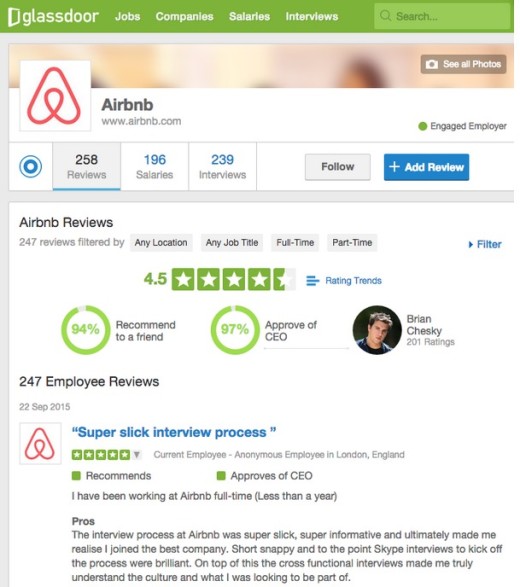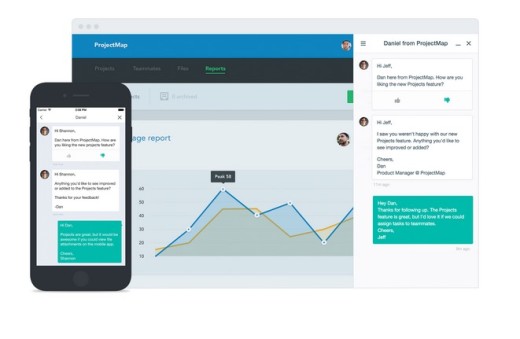
In an environment where up to 90 percent of startups fail within their first three years of existence, entrepreneurs need to be keenly aware of what their competitors are doing. Keeping the news and social media at your fingertips, and being able to quickly make sense of the data out there are vital for being part of the 10 percent that survive.
Here I’ll take you through a range of ways you can monitor what’s going on the world and in your industry, in order to outmanoeuvre the competition.
Keep an eye on financials
Now we’ve got up-to-the-minute news online and breaking news on Twitter, anyone can monitor financial information coming from competitors almost in real time, especially if you are pitting yourself against the biggest players in an industry. So the challenge for your startup is to make sense of the huge amounts of data.
If a competitor’s sales are down but profits are up, are they switching up their pricing model? Would that affect how you price your own product? You need to be clear why you are monitoring specific financial figures, so the information you get will feed back into your business strategy, rather than getting swamped with information overload while trying to build a picture of the opposition.
Try subscribing to Fortune’s Term Sheet: it’s a daily digest of IPOs, funding, tech gossip and senior job moves. Also read the back page of the Financial Times, called the Lex Column. Reading both of these columns for even a week will massively boost your financial knowledge.

Win the talent game
You need to know who is getting hired and fired – at other startups right up to the biggest tech players, especially if it’s in your vertical. Why are these individuals being appointed – what’s the game plan there? If a particular company makes three sales hires in a short space of time, are they ramping up sales efforts or just replacing unhappy employees?
Read the appointments sections to see who is moving where (for example City AM has a daily section for London hires and fires), and then amalgamate that with other sources like social media to work out the why.
Also take the time to dig into what people are saying on Glassdoor about working with your competitors, and indeed the larger tech companies. You need to know what’s worked well to attract the brightest talent, as well as what’s driven them away.

Look at the big picture
You need global media coverage at your fingertips to better understand what’s affecting other tech companies like yours.
Are events, politics or PR scandals in the wider world having an impact on your rivals’ bottom line? For example, house prices in the UK stagnated earlier this year prior to the election: for both startups and traditional businesses in the property industry, this is really helpful information. Understanding public sentiment and reading into public optimism or pessimism can be vital to predicting future performance.
Be on top of media coverage
However you keep an eye on what’s going on in the world, don’t neglect traditional media. If you don’t have time to read or watch the news every day, make sure you get hold of a news digest, or read the news in-depth a couple of times a week.
Where are your competitors being talked about? Is it in trade press? For example, if your main competitors are in retail tech, you need to be reading retail titles like Retail Week. They’re not as sexy as tech publications but you need to understand what you’re up against.

Which countries or regions are they getting coverage? It could imply that they are ramping up operations in one geographic location. Look beyond merely story volume, and take advantage of modern tools’ ability to give you insight based on the ‘where’, ‘when’ and ‘what’ of the coverage they generate.
When you have your own news, relevant comment, an opinion piece or new data to share, get in touch with journalists about it (either via your in-house marketing team or your PR agency). Tools like Roxhill let you get hold of contact details of journalists, as well as find out what they’re regularly writing about. You should make your email pitches as tailored as possible to what they write about, as journalists don’t enjoy being sent irrelevant information.

Engage better with customers and leads
Making sure that your customers are actually getting maximum value from your product is the key to making sure they stick with you and don’t turn to a competitor’s platform. Intercom is a tool that gives you the ability to guide these customers from the get-go, making sure you can give them all the information they need to get started via email, push notifications and in-app messages. Intelligent targeting tools mean you can reach out to the right users at the right time, and track users that have dropped off so you can get them back on track.

It also lets you keep customers abreast of new features and releases within your product, while activities such as new signups and upgrades are easy to track – they can be directly linked back to the messages you send customers, so you know whether or not your actions have been effective. However, the more messages you are sending out, the more difficult it becomes to keep track of them all – but all in all, Intercom is a very handy tool for handling all aspects of customer engagement.
Win at social
Two really helpful tools you should be using to win at social media, in addition to the typical ones like Buffer, are Klout and Sysomos. Make sure you know what your own Klout score is, and use it to track your own social influence vs your competitors’ influence.
Who are other startups in your area engaging with online? Who is acting as their advocate – do they have anyone powerful on board? Tools like Sysomos are great for identifying this sort of thing, and to generally monitor your competitors’ social efforts.
It can also provide sentiment analysis, which again is good if you want to spend some time looking in-depth at what people are saying and feeling – for example, you can dive into information from a particular day when you put news out, and look at the sentiment towards your brand or news story for that day.
Hopefully that should be enough to get you started, and if you follow it all through and spend a weekend dedicated to reading, you will better understand your competitors, your industry and even the world.
Read Next: The cheapest way to improve productivity: make your employees happy
Image credit: Shutterstock
Get the TNW newsletter
Get the most important tech news in your inbox each week.




